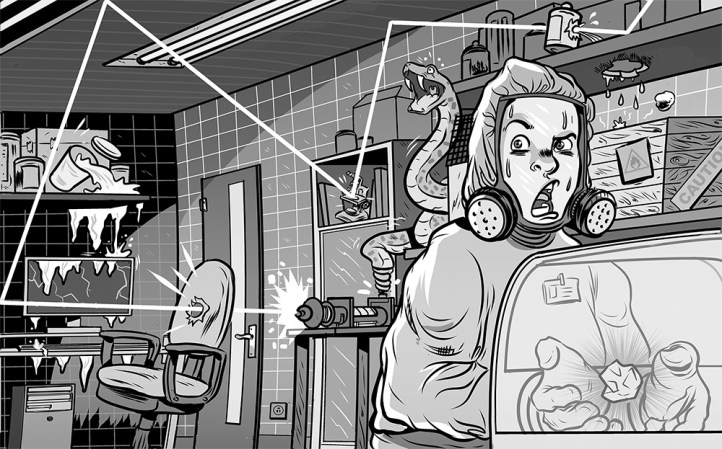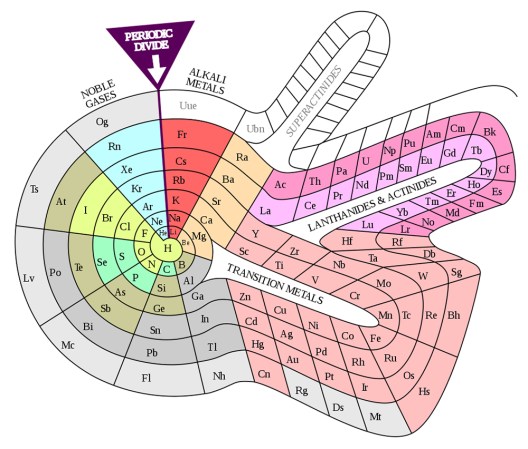

The past year brought us thousands of headlines, photo essays, and news broadcasts about COVID-19. But there was so much more to life than shutdowns, PPE, and vials of vaccines.
The World Press Photo Foundation recognized this with its 2021 contest and yearbook by Lannoo Publishers. Winners and finalists spanned 28 countries, and though quite a few did document the tremors of the pandemic, many continued the drumbeat of coverage around pressing issues like climate change, life with disabilities, and disaster relief. The PopSci picks below bridge human crises and creativity with wildlife interactions and conflicts. To see the full list of stories, projects, and single-taken photos chosen by the foundation, head to the website or an in-person (but socially distanced) exhibit.

“This was the first hug Rosa had received in five months. In March, care homes across the country had closed their doors to all visitors as a result of the COVID-19 pandemic, preventing millions of Brazilians from visiting their elderly relatives. Carers were ordered to keep physical contact with the vulnerable to an absolute minimum. At Viva Bem, a simple invention, ‘The Hug Curtain’, allowed people to hug each other once again. The new coronavirus had first appeared in Wuhan, China, at the end of 2019, and by January 2020 had begun to spread around the world. On 11 March, the World Health Organization declared the COVID-19 outbreak a pandemic. The disease—transmitted mainly via close contact, respiratory droplets, and aerosols—could be fatal, and people over the age of 70 were one of the groups considered most vulnerable to the disease. Brazilian president, Jair Bolsonaro, dismissed claims about the severity of the pandemic and the danger posed by the virus, undermined quarantine measures adopted at state level, and encouraged Brazilians to continue working to keep the economy afloat. Brazil ended 2020 with one of the worst records globally in dealing with the virus, with some 7.7 million reported cases and 195,000 deaths.”

“In early 2020, Kenya experienced its worst infestation of desert locusts in 70 years. Swarms of locusts from the Arabian Peninsula had migrated into Ethiopia and Somalia in the summer of 2019. Continued successful breeding, together with heavy autumn rains and a rare late-season cyclone in December 2019, triggered another reproductive spasm. The locusts multiplied and invaded new areas in search of food, arriving in Kenya and spreading through other countries in eastern Africa. Desert locusts, Schistocerca gregaria, are potentially the most destructive of the locust pests, as swarms can fly rapidly across great distances, traveling up to 150 kilometers a day. A single swarm can contain between 40 and 80 million locusts per square kilometer. Each locust can eat its weight in plants each day: a swarm the size of Paris could eat the same amount of food in one day as half the population of France. Locusts produce two to five generations a year, depending on environmental conditions. In dry spells, they crowd together on remaining patches of land. Prolonged wet weather—producing moist soil for egg-laying, and abundant food— encourages breeding and producing large swarms that travel in search of food, devastating farmland. Even before this outbreak, nearly 20 million people faced high levels of food insecurity across the East African region, challenged by periodic droughts and floods. COVID-19 restrictions in the region slowed efforts to fight the infestation as supply chains of pesticides were disrupted.”

“Animal-assisted therapy, also known as pet therapy, is used in many clinical environments, especially in psychological therapy and palliative care. Animals appear to be able to reduce anxiety and stress, and also to have physical effects, such as lowering blood pressure, improving heart rate, or helping in pain management. In hospices, the aim is to use the natural bond between humans and animals to provide comfort, peace, and companionship to terminally ill patients. Horses seem particularly suited for palliative care as they are especially in tune with their surroundings. Peyo works with his trainer Hassen Bouchakou at Les Sabots du Coeur, an organization devoted to animal-assisted therapy, and to scientific research into the subject. He supports around 20 patients each month, and scientists are now studying his instinctive ability to detect cancers and tumors.”
“California sea lions are playful animals, native to western North America. With COVID-19 lockdowns in place across California, outdoor and natural beauty spots with plenty of wildlife became a popular focus for local travel. In many countries the wearing of face masks outdoors was obligatory. Similar destinations around the world became littered with abandoned masks. The BBC reported an estimated 129 billion disposable face masks and 65 billion throwaway gloves being used each month through the pandemic. Such personal protective equipment (PPE) can be mistaken for food by birds, fish, marine mammals, and other animals. PPE also contains plastic, and so contributes to the eight million tons of plastic that end up in the oceans every year. According to World Animal Protection, every year an estimated 136,000 seals, sea lions, and whales die from plastic entanglement. Surgical masks break down into millions of microplastic particles over time, which are eaten by fish and other animals, and therefore carry contamination back up the food chain, potentially also affecting humans.”

“As Himalayan snows dwindle and glaciers recede, communities in the Ladakh region of northern India are building huge ice cones that provide water into summer. Ladakh is a cold desert, with winter temperatures reaching -30°C, and an average rainfall of around 100 millimeters. Most villages face acute water shortages, particularly during the crucial planting season in April and May. In 2013, Sonam Wangchuk, a Ladakhi engineer and innovator, came up with a form of glacier-grafting that creates artificial glaciers in the form of conical ice heaps, resembling Buddhist religious stupas. The ice stupas store winter meltwater and slowly release it for the growing season in spring, when it is most needed for crops. The stupas are created in winter, when water is carried down from higher ground in underground pipes. The final section rises vertically, and the difference in height causes water to fountain outwards, in subzero temperatures, freezing to form a stupa. Stupas were established in 26 villages in 2020, and a pipeline is under construction to create 50 more. Stupa creator Wangchuk says that the stupas stand for a final attempt of Himalayan mountain communities to fight the climate crisis, but should not be considered as a solution to the challenge: that remains the responsibility of national governments, and people adopting environmentally friendly lifestyles to reduce emissions.”

“‘Reborn’ babies first appeared in the 1990s. Each is unique, carefully crafted by artists known as ‘reborners’. The hyper-realistic reborn babies are created with such details as birthmarks, veins, implanted hair, pores, tears, and saliva. More sophisticated reborns are equipped with electronic systems capable of reproducing the heartbeat, breathing, and sucking of a real baby. Most of the dolls are made of vinyl, though the more realistic ones are made from silicone. Human hair is used for eyelashes, and completed dolls are sometimes perfumed with a ‘new baby’ smell. Reborn babies are available whole and in kit form, and can be purchased online and at fairs. The process of buying a reborn can be done in such a way as to simulate adoption: dolls come with ‘adoption’ or ‘birth’ certificates. Reborn babies have been used in pediatric training to teach students practical childcare skills, and the use of the dolls in care homes has been shown to help reduce disruptive behaviour in people with dementia. While most reborn owners are doll collectors, others have experienced miscarriage, neonatal deaths, have no means for adoption, or suffer from empty nest syndrome, and may use the doll as a substitute for a child.
The photographer wished to explore the phenomenon of how artificial babies evoke genuine emotional response in adults. Each woman portrayed in this project has a personal motivation for having a reborn baby. Some who cannot have, or who have lost, a baby, give their love to an artificial one, looking after them, changing them, and buying them clothes. For some, the dolls are a means of dealing with loss or anxiety; for others they provide companionship.”

“Rothschild’s giraffes are a subspecies of the northern giraffe, and are classified as endangered. The giraffe is the world’s tallest land mammal and the Rothschild’s giraffe is one of the loftiest subspecies, growing up to six meters in height. Longicharo Island was once a peninsula. Rising water levels in Lake Baringo over the past ten years have cut the peninsula off to form an island. Particularly heavy rainfall in 2019 caused further floods, stranding nine giraffes. The local community worked with conservationists from the Kenya Wildlife Service, the Northern Rangelands Trust, and Save Giraffes Now, to build the barge and transport the marooned animals to a sanctuary in the Ruko conservancy on the shores of the lake. The rains had also led to an abundance of food on the island, so edible treats could not be used to entice the giraffes onto the barge. Instead, the giraffes had to be tranquilized, which is a dangerous procedure given their anatomy, as they are at risk of choking on their own saliva, and changes in blood pressure can cause brain damage. A vet was on hand to immediately counteract the drug; the animals were then hooded and led onto the barge with guide ropes.”

“The Florida panther is a subspecies of Puma concolor (also known as mountain lion, cougar, or puma) and, according to the US Fish and Wildlife Service, represents the only known breeding population of puma in the eastern United States. Listed as an endangered species in 1967, Florida panthers are gradually making a comeback, growing from fewer than 20 panthers in the 1970s, to more than 200 today. Florida panthers feed primarily on white-tailed deer and wild hogs, but also smaller mammals such as raccoons, armadillos, and rabbits. Ranches are vital to panthers, because few public lands are big enough to support even one adult male panther, which may require up to 500 square kilometers of territory in which to roam and hunt. Audubon’s Corkscrew Swamp Sanctuary is too small to supply the full territory needs of one panther, yet serves as part of the home range for several. The panthers are caught in a race between the need for territory, and increasing land development as a result of Florida’s rapidly growing population, with some 400 square kilometers of their habitat being lost each year.”

“Nymphargus wileyi is known only from examples discovered around the Yanayacu Biological Station, and so is listed as ‘data deficient’ by the International Union for Conservation of Nature. The species inhabits primary cloud forests. Individuals can be found on leaves at night. Females deposit eggs in a gelatinous mass on the dorsal surface of leaves hanging above streams, near the tip. A male can fertilize up to four clutches of eggs in a breeding season. The whitish embryos, between 19 and 28 per clutch, will develop for a few days until they are ready to drop into the water to continue their metamorphosis.”

“A pair of feral pigeons befriended the photographer’s family, who were isolated in their apartment in Vlaardingen, the Netherlands, during the COVID-19 pandemic. Ollie and Dollie, as the family named them, were regulars in the house, their daily visits a reminder that humans are not alone on this planet, even while living isolated in urban areas. Feral pigeons are descended from the rock dove, which naturally inhabits sea cliffs and mountains. They find the ledges of buildings to be substitutes for sea cliffs, have adapted to urban life and surroundings, and now live in urban areas on every continent except Antarctica, with a global population in the hundreds of millions. Rock doves were the first birds to be domesticated, between five and six thousand years ago, in Mesopotamia. They were bred for food, and later trained to carry messages. Birds escaping or released from a domestic environment became the first feral (or city) pigeons. Although they are believed to be vectors of diseases, the evidence is to the contrary. It is rare for city pigeons to transmit a disease to humans, and while they do transmit contagions such as Salmonella and avian mites, infecting mammals is rare.”

“According to the Small Arms Survey—an independent global research project based in Geneva, Switzerland–half of all the firearms owned by private citizens in the world, for non-military purposes, are in the USA. The survey states that the number of firearms exceeds the country’s population: 393 million guns to 328 million people. Gun ownership is guaranteed by the Second Amendment of the US Constitution, which dates from 1791 and has long been a controversial issue in American legal, political, and social discourse. Those who argue for the repeal of the Second Amendment or introduction of stricter gun control say that the Second Amendment was intended for militias; that stronger regulation will reduce gun violence; and that a majority of Americans, including gun owners, support new restrictions. Second Amendment supporters state that it protects an individual’s right to own guns; that guns are needed for self-defense against threats ranging from local criminals to foreign invaders; and that gun ownership deters crime rather than causes more crime. According to the independent Gun Violence Archive (GVA), the US has had more mass shootings than any country on the planet, with 633 mass shootings in 2020 alone.”

“Bouldering entails climbing on small rock formations and boulders of usually no more than six meters in height, without ropes or harnesses. Historically, it began as a training activity for more ambitious climbing and mountaineering pursuits, but has evolved into a sport in its own right. Rock-climbing gyms and sports facilities in Munich were closed as a result of the ongoing COVID-19 pandemic, so athletes had become creative in their training methods.”

“Saeed Ramin is a professional traceur (practitioner of parkour) living in Gachsaran, Iran. Seven years ago, Saeed fell in a parkour competition, injuring the spinal cord in his neck. The aim of parkour is to get from one point to another in complex—usually urban—environments, without assistive equipment and in the fastest and most efficient way possible: running, vaulting, swinging, climbing and all manner of other movements, sometimes in dangerous situations such as between high rooftops. The discipline was popularized in the late 1990s and 2000s through films, video games, documentaries and advertisements, and it became popular in Iran after two Iranian traceurs appeared in the documentary, Jump London. Saeed’s injury when he fell was so severe that he could only blink, and doctors said he wouldn’t even be able to sit in a wheelchair. Saeed couldn’t afford extended hospital treatment, but with the help of his family, he improvised rehabilitation equipment in his yard, and despite the doctors’ predictions, was able to regain the mobility of his hands. Saeed regained more of his abilities, and is now able to manage a wheelchair. He still likes to do things other people are afraid of.”

“A wildfire began in Oliveira de Frades, about 100 kilometers from Porto in eastern Portugal, on 7 September, and spread some 30 kilometers west, to Sever do Vouga, and 40 kilometers southwest, to Águeda, in the neighboring district. At least 300 firefighters, 100 land vehicles and ten firefighting planes battled the blaze in a landscape dominated by eucalyptus trees. The uncontrolled spread of eucalyptus trees—which supply raw material for an economically important pulp industry, but which are extremely flammable—are a major factor in the rapid spread of wildfires. Portugal has a wildfire season lasting from June to September. Its hot climate, consistent warm winds coming off the Atlantic, and a well-forested landscape make it particularly susceptible to fire. Extreme temperatures and severe drought contributed to the 2020 fire season. A 2020 report released jointly by the Portuguese Association of Nature and the World Wide Fund for Nature states that Portugal is the European country worst affected by wildfires: more than three percent of its forest burns every year.”







